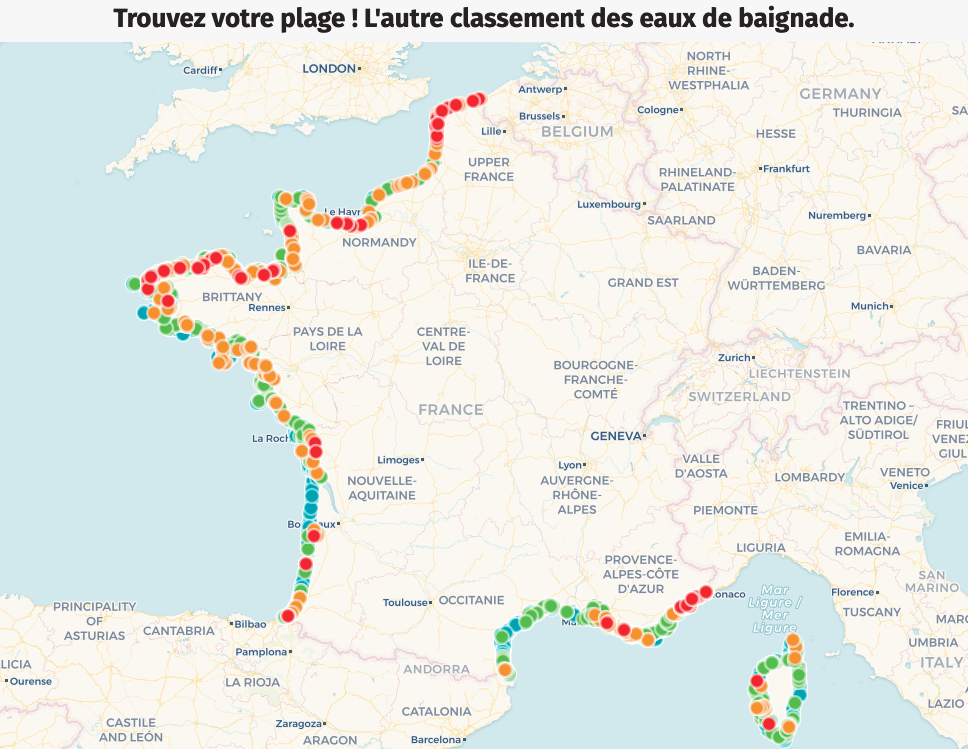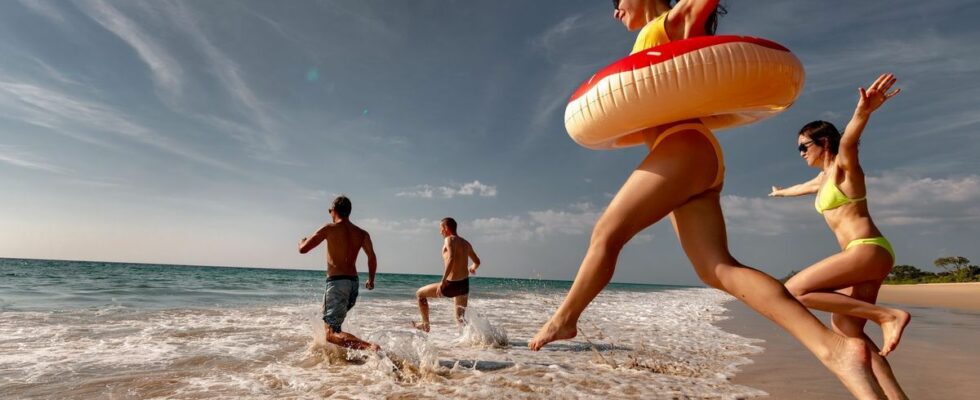Published on
Updated
Reading 2 min.
Planning to lounge on a beach this summer? Beware of bacteria, which also thrive on a number of them and can make you sick! Luckily, a website now lists the official data for your vacation spot.
Head to the beach this summer to relax and enjoy a good swim with your family! A common pleasure among vacationers, which could however be disrupted by undesirables: according to the environmental association Water and Rivers of Brittany who published a study on the quality of bathing water based on samples taken by the Regional Health Agencies, one beach in five on all of our coastlines is today contaminated by bacteria.
Escherichia coli as a beach neighbor
Thus, in France, monitoring the quality of bathing water has been mandatory since 1976 for sea and freshwater bathing sites where bathing is permitted and there are significant numbers of people.
According to the ARS of Brittany, this control is determined through the 2 regulated bacterial indicators: Escherichia coli and intestinal enterococci.Their presence in water can be associated with that of more dangerous pathogenic germs. The risk of infection associated with swimming in water of poor microbiological quality mainly results in gastroenteritisear infections, dermatitis. Specific microbiological risks also exist in fresh water, such as leptospirosis For example” lists the Agency.
Is your beach affected?
To find out where to go for a swim without risk, the Breton association has put a national map online which can be consulted at labelleplage.fr It lists 1,854 beaches in mainland France and Corsica according to the quality of their bathing water analyzed by the Regional Health Agencies on which they depend.
Each beach is associated with a blue, green, orange or red circle, corresponding to the level of the bathing recommendation:
To date, the observation is as follows:
- 755 beaches (41%) are “recommended” (blue dot);
- 690 beaches (37%) are “low risk” (green dot);
- 316 beaches (17%) are “not recommended” (orange dot);
- 93 beaches (5%) are “to be avoided” (red dot).

The cleanest beaches, and those to avoid.
For the moment, the worst-ranked beaches are located in
- The Alpes-Maritimes;
- The North ;
- Pas-de-Calais;
- Calvados;
- The north coast of Brittany.
Among the most contaminated are the beaches of Landunvez (Finistère), Boulogne-sur-Mer (Pas-de-Calais) and Saint-Laurent-du-Var (Alpes-Maritimes).
The best ranked beaches are located:
- On the Atlantic coast ;
- In Occitania;
- In Corsica.
The beaches of Lège-Cap-Ferret (Gironde), Palavas-les-Flots (Hérault) or Etel (Morbihan) are at the top of the ranking.

